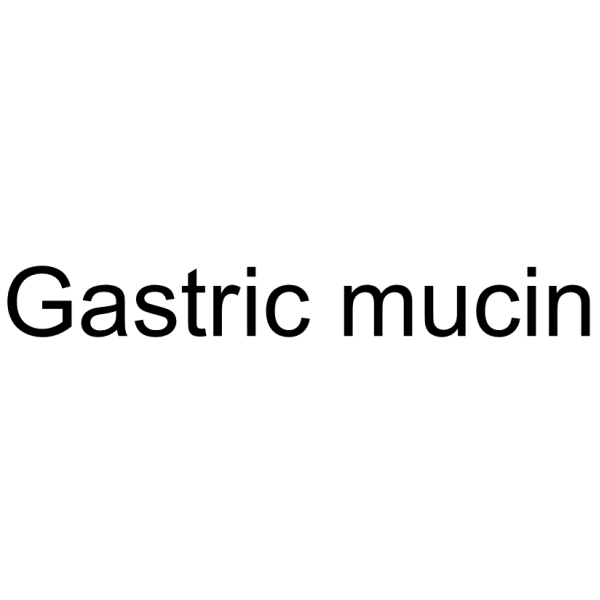Shopping Cart
Remove All Your shopping cart is currently empty
Your shopping cart is currently empty
Gastric mucin, a large glycoprotein, is thought to play a major role in protecting the gastrointestinal tract from acid, proteases, pathogenic microorganisms, and mechanical trauma. Gastric mucin is a natural protein derived from pigs.

| Pack Size | Price | USA Warehouse | Global Warehouse | Quantity |
|---|---|---|---|---|
| 500 mg | $40 | In Stock | In Stock | |
| 1 g | $46 | In Stock | In Stock | |
| 2 g | $53 | - | In Stock | |
| 5 g | $65 | - | In Stock | |
| 10 g | $77 | - | In Stock |
| Description | Gastric mucin, a large glycoprotein, is thought to play a major role in protecting the gastrointestinal tract from acid, proteases, pathogenic microorganisms, and mechanical trauma. Gastric mucin is a natural protein derived from pigs. |
| In vitro | Gastric mucin, a large glycoprotein, plays a crucial role in protecting the gastrointestinal tract against acid, proteases, pathogens, and mechanical damage. It is also implicated in gastric injuries caused by Helicobacter pylori, potentially leading to gastritis, peptic ulcers, and gastric cancer. Gastric mucins are classified into two categories based on histochemical properties: surface mucous cell-type mucin, secreted by surface cells, and glandular mucins, secreted by deeper mucosal cells including mucous neck, cardiac gland, and pyloric gland cells. The O-glycans within gastric mucin may act as natural antibiotics, offering protection against H. pylori infection. Additionally, gastric mucin guards the gastrointestinal epithelium by neutralizing oxidants in the lumen, despite reducing its viscoelastic properties. Studies have shown that both unaltered and pronase-treated mucin can effectively neutralize hydroxyl radicals, with no significant difference in their scavenging abilities. A concentration of 10 mg/mL of mucin is required to halve malondialdehyde production, applicable to both mucin types. |
| Cas No. | 84082-64-4 |
| Relative Density. | no data available |
| Color | White |
| Appearance | Solid |
| Storage | keep away from moisture | Powder: -20°C for 3 years | In solvent: -80°C for 1 year |
| Solubility Information | DMSO: < 1 mg/mL (insoluble or slightly soluble) H2O: < 0.1 mg/mL (insoluble) 0.1 M NaOH: < 1 mg/mL (insoluble) |
| Size | Quantity | Unit Price | Amount | Operation |
|---|

Copyright © 2015-2025 TargetMol Chemicals Inc. All Rights Reserved.